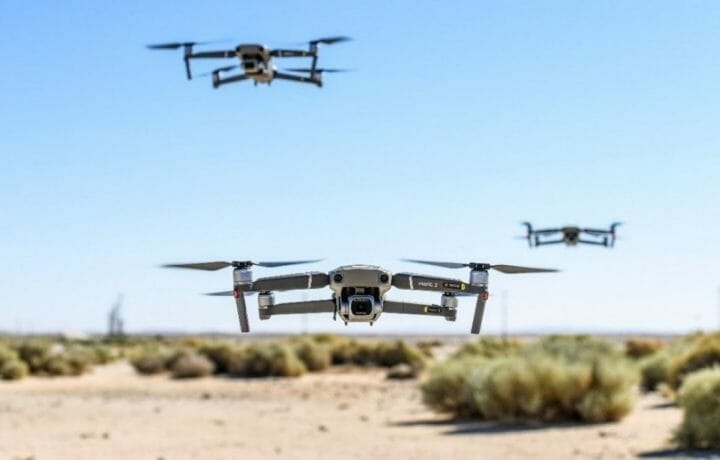Earlier this month, Russian Army Commander-in-Chief General Oleg Salyukov said in an interview with the Russian Defense Ministry’s Krasnaya Zvezda newspaper that unmanned aerial vehicles (UAVs) or drones, as well as wearable robotics and exoskeletons are now being developed for use by the Russian Ground Forces. While it may sound like science fiction, Russia has been working on this technology for several years.
“Speaking of the combat equipment of ‘the future soldier,’ it should be mentioned that in 2021, in cooperation with domestic industrial enterprises, extensive work was carried out to include a new ‘robotic’ subsystem in the combat equipment of a serviceman, which includes mini-and micro-UAVs, wearable robotic complexes, as well as exoskeletons,” Salyukov explained.
High-Tech Warriors from Russia
The Russian military began working on its “Ratnik” (Russian for “warrior”) future infantry combat system nearly a decade ago. It was developed to improve the connectivity and combat effectiveness of combat personnel in the Russian Armed Forces, and there are reports it may have first been used during the Annexation of Crimea by the Russian Federation in 2014. More recently, it has been tested by soldiers from Belarus, Vietnam, Kyrgyzstan, China, Laos, Mongolia, Pakistan and Uzbekistan.
It primarily consists of combat body armor, including an Aramid fiber helmet system, and the modernization of the Ratnik system has continued – while it has coincided with the development of the futuristic looking Sotnik combat suit that its designers claim can even stop a .50 caliber bullet. The look of these new systems is very much something out of science fiction, with head-covering helmets and plates of body armor.
“The process of advancing the Ratnik’s infantry combat system never stopped for a minute,” Salyukov said. The military personnel of the Russian Ground Forces is provided with the combat system ‘Ratnik’ to the required extent to perform the assigned tasks.”
Does China Have Iron Man?
Russia certainly isn’t alone in developing what could be the combat body armor of the future. In October 2018, China’s People’s Liberation Army’s (PLA’s) Army Equipment Department began a competition for the best exoskeleton design, and it featured more than 50 prototypes fielded by 29 teams.
The purpose of the Chinese exoskeleton wasn’t actually to provide armor protection however. Instead, it was mean to help with reloading artillery rounds – which can be tiring, back-breaking work. That can impact the effectiveness of artillery operations, and while autoloaders and automated systems can do much of the work – there are still tasks that need to be performed by humans.
The exoskeleton could transform the average PLA soldier into one with near Herculean strength and who could easily lift 155mm shells weighting upwards of 110 pounds with ease.
The U.S. Special Operations Command has sought to develop a similar platform that could combine armor protection and sensors as well as to provide enhanced strength and endurance for the operator. While the tactical assault light operator suit (TALOS) has fallen short of its goals, it is just one program the U.S. military has explored.
“The U.S. isn’t just following suit, we’ve been working on similar projects just as long as the Russians or Chinese, and perhaps longer,” said Dr. Matthew Schmidt of the national security department at the University of New Haven.
“We’ve been trying to build these exoskeletons for a half century,” Schmidt told ClearanceJobs.
At issue is that until recently the technology to create such equipment wasn’t really there. That has changed, thanks to the development of composites and 3D parts, which make fabrication of the equipment easier.
“The stuff that is being fielded looks like stuff we use for industrial applications,” explained Schmidt. “Its use would be to lift heavier stuff more easily. There isn’t really anything particularly fancy about it, and we’ve seen that the Russians have been employing this already in their bomb and explosive disposal systems.”
The United States could also look at other applications that could involve using dog or mule-style robots as mechanical beasts of burden to transport heavier equipment, while at the same time there has been a focus to reduce the weight of body armor and even weapons.
Drone On
The other equation in this is how quickly there is adoption of military drones around the world. Already drones can be an eye in the sky, and even a almost silent or invisible assassin in the sky, but throughout the world there are efforts to create smaller combat drones that could be used to overwhelm an enemy.
“What we could see is a swarm of drones, and there might be no good defense,” warned Schmidt. “This could drive the need for an armored exoskeleton for the infantry, where the soldier becomes sort of a mini-tank.”
The concept wouldn’t that different from science fiction, notably Robert Heinlein’s Starship Troopers, which first popularized the idea of “powered armor.”
“At this point everyone is looking at developing a form of battle armor,” said Schmidt. “It could be the next evolution of modern military equipment.”




